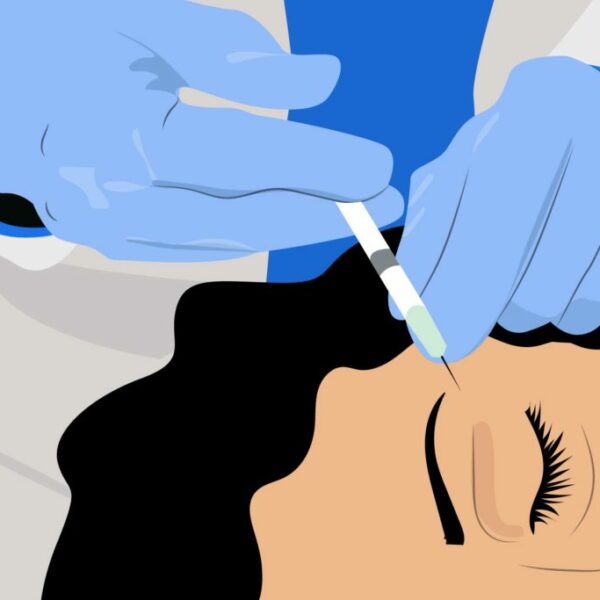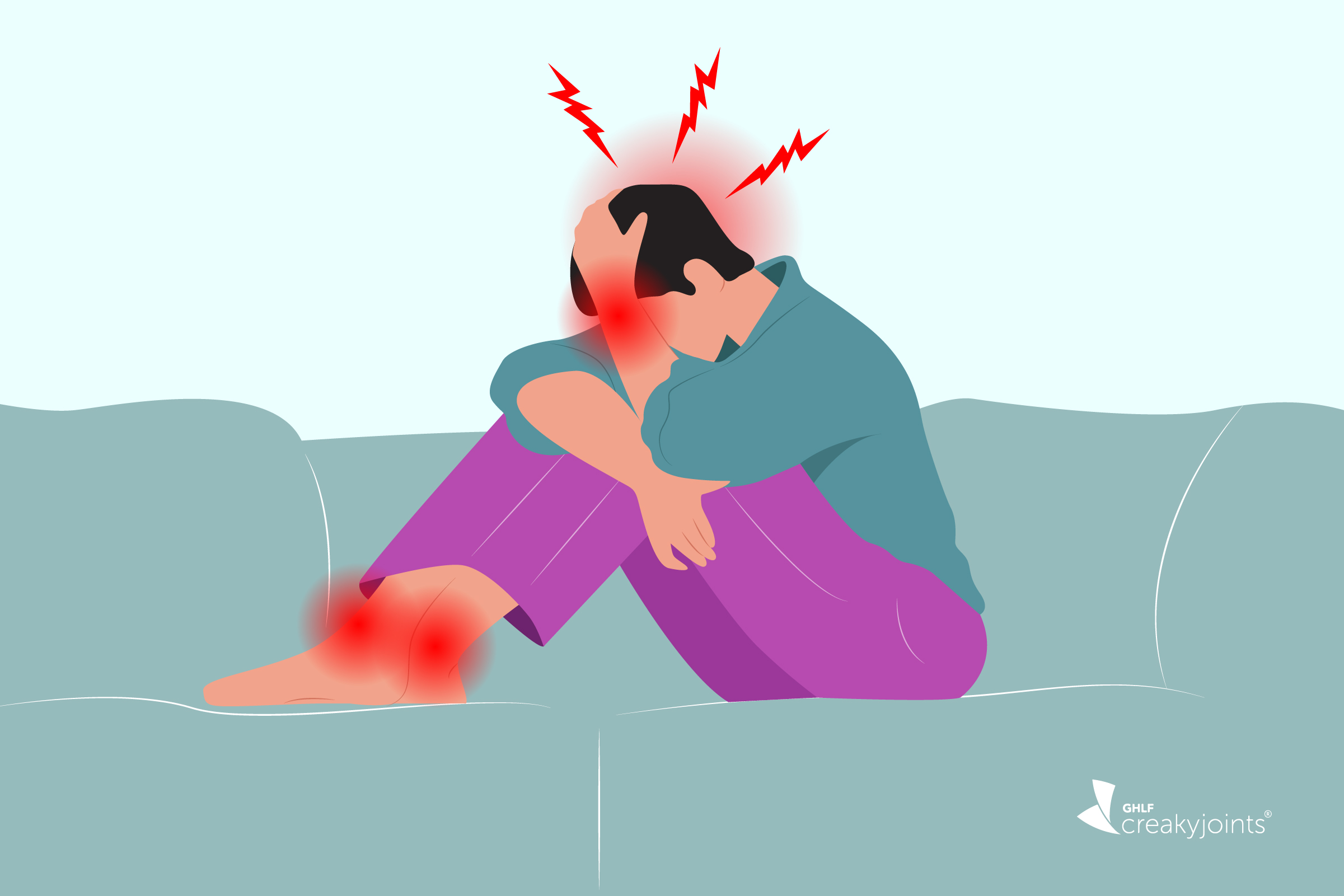Discover the symptoms of brain fog linked to migraine and learn coping strategies to manage cognitive challenges.
BOTOX FOR MIGRAINE DURING COVID-19: WHAT IF YOU CAN’T GET BOTOX TO PREVENT MIGRAINE ATTACKS?
BOTOX FOR MIGRAINE DURING COVID-19: WHAT IF YOU CAN’T GET BOTOX TO PREVENT MIGRAINE ATTACKS?
April 15, 2020
Karyn Repinski

Botox may be best known as a vanity treatment for the wrinkle-averse, but since it was FDA-approved in 2010 to prevent chronic migraine disease, Botox has been a game-changer for many of the millions of people who suffer from this often-debilitating neurological condition.
Migraine attacks are characterized by throbbing pain on one or both sides of the head, along with nausea, sensitivity to sound, light, and smell, and a host of other symptoms. As any patient knows, migraine is much more than just bad headache. The pain and other symptoms associated with migraine can become so severe as to be unmanageable, hence the reason migraine disease accounts for more than 800,000 annual visits to the emergency room.
To curb migraine attacks, at least 500,000 people with migraine have tried Botox, according to a 2017 analysis by its manufacturer, Allergan. How many stick with the treatment is unclear. “In my practice, we find that about 70 percent of patients [who get Botox] are responders, so I’d anticipate that they’d stay on the treatment,” says neurologist Andrew Blumenfeld, MD, director of the Headache Center of Southern California.
If that’s the upside, here’s the downside: To experience and maintain benefits from Botox for migraine, it has to be injected on a very strict schedule by a medical provider, often a neurologist.
Though it is a quick, 15-minute treatment, it still requires patients to go into their provider’s office — and never before has it become as important to keep patients at home, both to protect them from possible exposure to coronavirus and to prevent them from possibly spreading the coronavirus to others.
With the health care system so stressed with the COVID-19 pandemic, and with advice to avoid public places to decrease the risk of exposure to the coronavirus, there is growing concern that migraine patients won’t be able to get the treatment they rely on to prevent attacks and keep them feeling functional.
How Botox Helps Prevent Migraine Attacks
When injected in tiny doses into the muscles of the face, scalp, neck, and shoulders, Botox, a neurotoxic protein, works by getting into the nerve endings and deactivating pain receptors so pain signals can’t be sent to the brain.
“Botox blocks a range of neurochemicals, including one called CGRP [calcitonin gene-related peptide], that are released during migraine and that cause the migraine symptoms,” explains Dr. Blumenfeld, a prominent researcher on the use of Botox for migraine. He has treated more than 30,000 migraine patients. The more often you have Botox, the better it works, he says. “We see a build-up effect as it slowly switches off these overactive nerve endings.”
Though Botox is not a cure for migraine, it can be the foundation for treatment that helps control these crippling attacks.
It’s also not a treatment you can typically get after you’ve had a bad migraine attack or two. Botox is FDA-approved only for chronic migraine, which means you get migraine attacks 15 or more days a month. Patients with chronic migraine can be severely debilitated by their disease.
“Some patients have tried all the preventative treatments and finally found a treatment paradigm that involves [Botox] injections that keeps their disease at bay and keeps them functional,” David Dodick, MD, a professor of neurology at the Mayo Clinic in Phoenix, Arizona, and chairman of the American Migraine Foundation, said in a recent webinar on migraine and COVID-19.
The benefits can be so profound that many people categorize their condition as before Botox and after Botox.
“There was a time without Botox that I could feel every muscle in my face and where it attached to my skull,” says Cat Charrett-Dykes, founder and director of the advocacy group Chronic Migraine Awareness, who has been a migraine patient for more than 40 years. She has received Botox injections as her primary treatment for 10 years.
Cat is also a migraine patient advocate in GHLF’s Patient Support Program for navigating COVID-19 with a chronic illness.
“The pain was so bad I couldn’t open my mouth to speak, so I’d pass notes to my husband,” she recalls. Botox injections, she says, have taken the edge off the pain and lessened the number of attacks she gets as well as their severity. “I still have migraine, but it’s more tolerable.”
Research shows that Botox decreases the frequency of migraine days by an average of 50 percent for those who experience 15 or more headache days a month. “Some patients do much better than a 50 percent improvement — that’s just an average over a large population,” says Dr. Blumenfeld. With continued treatment, one in four patients experience a “massive” 75 percent improvement, reports Dr. Blumenfeld.
For Jeannette Rotondi, a social worker in Jackson, New Jersey, Botox stopped the “constant migraine attack” she began experiencing 14 years ago when she was 29. She still gets 15 migraine attacks a month, but with the injections, the attacks aren’t as severe.
“There’s shooting pain in my eye, it’s hard to get my words out. It’s not fun, but I’m still functioning — I can still see patients and take care of my son,” she says. “Before Botox, the attacks were intractable [unstoppable]. I couldn’t get out of bed and couldn’t turn on the lights.”
Botox Injections Need to Be Given Regularly
As profound as it may be, the relief Botox injections provide is not permanent. After several months, the headache pain and other symptoms usually return. To maintain the benefits, treatment with Botox — a series of 31 injections into specific points directly above the nerve endings that carry the pain messengers — needs to be repeated regularly.
“We don’t like Botox to wear off. The less time the brain is exposed to the cascading effect of migraine, the better it is for the long-term prognosis,” says Dr. Blumenfeld. “That means doing Botox every 12 weeks on quite a strict schedule.”
The COVID-19 Pandemic and a Break in Migraine Care
Despite the critical nature of maintaining this treatment cycle to keep migraine attacks from spiraling out of control, there is growing concern that medical offices — including private practices and hospital- or university-based clinics — that offer Botox injections will cancel or defer these procedures due to COVID-19, limiting access to the treatment people with migraine rely on.
It is a worrisome proposition, says Dr. Dodick. “Many of our patients rely on these procedures and they’re exactly what keep them comfortable and out of ER departments.”
But with the health care system under strain, “many centers [that offer Botox injections] have opted to close clinics entirely due to the current pandemic,” reports Deena Kuruvilla, MD, assistant professor of neurology at Yale School of Medicine in New Haven, Connecticut.
She notes that it is currently controversial as to whether Botox is urgent or not, depending on the patient, their history, and the consequences of missing the treatment. “COVID has spread pretty rapidly among health care workers and there is an ethical dilemma as to whether or not we should be exposing our Botox patients,” she says. The literature shows that being close to one’s nose and mouth spreads viruses pretty rapidly without the appropriate personal protective equipment (PPE), says Dr. Kuruvilla. Many institutions don’t have PPE to share with outpatient clinics because it is needed for those with COVID-19, as well as for doctors and nurses who are treating them.
Another ethical issue at play: Many doctors, including neurologists, are now covering the hospital because of critical shortages of health care workers. These providers may bring potential exposures to the outpatient setting.
“We have continued with a limited amount of procedures in our own practice,” says neurologist Noah Rosen, MD, director of Northwell Headache Center in Great Neck, New York. “However, that capability has changed as our providers, both physicians and nurse practitioners, have been called for redeployment.”
While that has limited resources and pushed off some of the center’s [Botox] procedures, Dr. Rosen says a few are still scheduled. “Other outpatient practices have continued to see a limited number of cases on a need-to-treat basis.” Yale Neurology, where Dr. Kuruvilla sees migraine patients, had just mandated that all providers doing Botox should continue doing so at this time.
Jeannette Rotondi wasn’t as lucky with her Botox treatment. After being assured that her headache specialist would be staying open, she was abruptly told the day before her Botox appointment that her provider was shutting down due to the expected peak of the coronavirus. “I didn’t have the date of my appointment in my head, but I knew it was coming — my headaches were getting more intense and taking longer to treat,” she says. Now, a week after her canceled appointment, Rotondi says she’s “hanging in there so far. The attacks are increasing in frequency and severity, but I’m still managing.”
Charrett-Dykes isn’t due for her next round of Botox injections until the end of April, and so far, her doctor’s office is still open. “I’m just crossing my fingers,” she says. “I have pretty good coverage, so I don’t notice the Botox wearing off yet, but it wouldn’t be long after that.”
Necessary Precautions During Botox Procedures
If you are able to get your Botox treatment, expect that certain precautions will need to be taken. Botox injections often trigger a reflexive sneeze, which can transmit the virus. You’ll be screened for symptoms of COVID-19 and have your temperature taken. Depending on the provider and a patient’s health status, they may be fully gowned and wear a face mask or shield, or they and the patients may only wear surgical masks.
“So far, it’s been going okay,” reports Dr. Blumenfeld, who is resolute in his belief that therapeutic Botox treatment needs to continue in “around-the-clock 12-weekly cycles so that a patient’s headache management doesn’t take a back step. The risk is that the [migraine attacks] come back and patients will overuse the health care system by going to urgent care or the ER because they can’t get help anywhere else.”
What to Do If You Can’t Get Botox Injections
If you haven’t yet considered treatment with the new drugs designed to target CGRP, the protein that, for most migraine patients, causes the inflammation that leads to the pain of a migraine attack, now is the time to do so, says Dr. Kuruvilla. “Just like Botox, these treatments are FDA-approved for chronic migraine prevention and [they] have similar efficacy.”
CGRP migraine medications, which are also called anti-CGRP, CGRP inhibitor, and CGRP antagonist treatment, have been shown to reduce migraine by six to eight days a month for people with chronic migraine, which is a meaningful reduction.
Currently, three CGRP monoclonal antibody drugs are available for at-home use — Aimovig, Ajovy, and Emgality. They are each self-injected every three months. A fourth CGRP drug, Vyepti, is also FDA-approved; however, it is available by IV infusion and needs to be done at your doctor’s office or a medical facility.
There are a couple of potential snags with CGRP treatment for patients, including that insurance companies may not have approved them to use the medication.
Hopefully, insurers will heed the recent plea of seven prominent headache specialists to lift cumbersome restrictions on accessing migraine medications (including prior authorization and step therapy requirements), so patients can have greater availability of evidence-based treatment options in a time-sensitive manner — for instance, by allowing patients being treated with Botox to bridge their treatment with an anti-CGRP drug while their procedures may be postponed.
According to Dr. Rosen, many of his patients have been transitioned over to these other, more sustainable treatments that can be done at home.
Another possible hitch: “Many doctors want to do the initial injection at their office, which can obviously be difficult if the office isn’t open,” says Mary Franklin, executive director of the National Headache Foundation. In light of these extraordinary circumstances, and in a bid to help patients remain functional and out of the emergency room, it is likely most providers will waive that requirement. “By and large, if a patient can get by or if therapy can be adjusted or new preventive treatments implemented for a period of time, it will get the patient through until the dust settles and life gets back to normal and patients can come back for routine procedures,” says Dr. Dodick.
Luckily, Jeannette Rotondi recently started taking Aimovig, and she’s hopeful it will help her get through this difficult time. One upside to CGRP drugs is that they work quickly, and most patients who are going to respond see a significant clinical benefit within a month.
If CGRP medicines don’t work for you, or you experience a breakthrough migraine attack, there are many emergency treatments that can be prescribed over a video telehealth visit. “There are over 40 medications we can prescribe to patients to use as backup, as well as rescue treatments,” says Dr. Dodick.
But, be aware, that now more than ever, it’s important to treat while pain intensity is mild. “Don’t wait for the attack to escalate,” he says. “Outcomes are better when you treat early, especially when the pain is mild.”
You can also send non-urgent messages to your providers via apps like MyChart. “Maintaining a clear line of communication is really important,” says Franklin.
The Importance of Sleep and Stress Management
Keep in mind, too, that migraine can worsen during times of stress — and not even Botox can completely override this trigger. Do whatever you can to limit stress.
“Never before is it more important to practice good habits,” says Kathleen Digre, MD, professor of neurology and ophthalmology at the University of Utah and president of the American Headache Society. Along with eating a healthy diet and staying hydrated, she notes that sleep is especially critical.
Not only does a lack of sleep lead to stress, but sleep plays a key role in painful conditions like migraine, and research shows that not getting enough can lead to higher levels of proteins like CGRP that trigger the pain associated with migraine. Conversely, sleep is known to relieve already established migraine attacks. (Tip: If you’re experiencing a migraine attack and are feeling nauseous, antiemetics, medications that help stop nausea and vomiting, sometimes make people sleepy.) To help ensure you get enough shuteye, keep the same lights-out time, whether you have to get up at a certain time or not.
Get Free Coronavirus Support for Chronic Illness Patients
Join the Global Healthy Living Foundation’s free COVID-19 Support Program for chronic illness patients and their families. We will be providing updated information, community support, and other resources tailored specifically to your health and safety. Join now.
Szperka CL, et al. Migraine Care in the Era of COVID‐19: Clinical Pearls and Plea to Insurers. Headache: The Journal of Head and Face Pain. March 30, 2020. doi: https://doi.org/10.1111/head.13810.
Webinar: Migraine and COVID-19. American Migraine Foundation. April 1, 2020. https://americanmigrainefoundation.org/resource-library/migraine-and-covid-19.
Interview with Andrew Blumenfeld, MD, neurologist and director of the Headache Center of Southern California
Interview with Deena Kuruvilla, MD, assistant professor of neurology at Yale School of Medicine in New Haven, Connecticut
Interview with Kathleen Digre, MD, professor of neurology and ophthalmology at the University of Utah and president of the American Headache Society
Interview with Mary Franklin, executive director of the National Headache Foundation
Interview with Noah Rosen, MD, neurologist and director of Northwell Headache Center in Great Neck, New York
SUBSCRIBE TO GHLF
RELATED POST AND PAGES
_
Was this article helpful?
YesNo





This Post Has 0 Comments